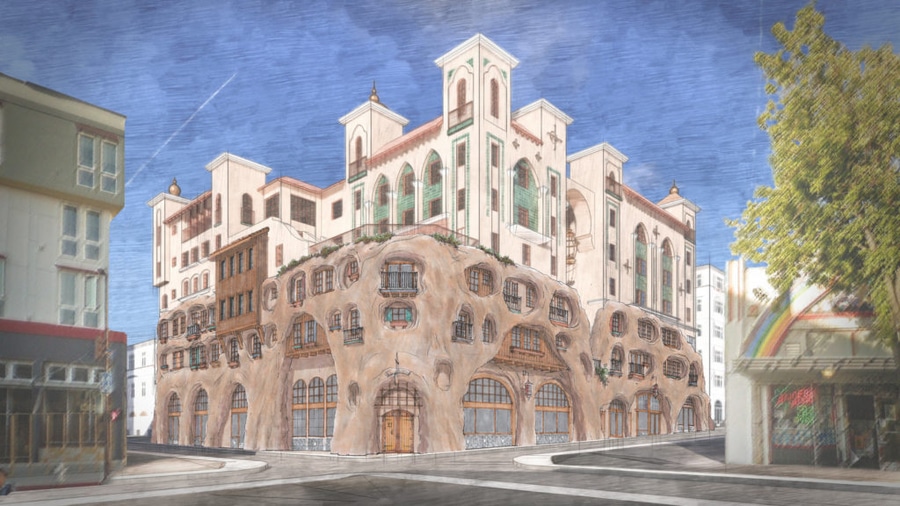
#PUBLIC ARCHITECTURE PROJECTS
Controversial UC Berkeley Enclave Dormitories scheduled to open this fall
While the dormitory typology is often at the mercy of a university’s campus-wide aesthetic, some manage to beat the odds and defiantly stand apart.
In 2012, Ken Sarachan presented his vision for a vacant lot on Berkeley, California’s tourist-laden Telegraph Avenue: A seven-story, 14,000-square-foot student housing building with what can be best described as a Middle Earth-style facade. Sarachan had many influences, including the architecture of Italian hill towns, Tibetan forts and the rock-cut architecture of Petra in Jordan, and he commissioned local architect Kirk Peterson to produce a set of renderings to match that vision, with the name El Jardin (The Garden, in Spanish). Needless to say, the design bears little resemblance to the vernacular architecture of the Bay Area, nor any of the buildings on the University of California, Berkeley campus the dormitory would serve.
Construction on the rusticated 254-bed dormitory finally began in October 2018, following the addition of local firm LCA Architects to the project team. “Telegraph Avenue is struggling, and this lot is at the core, the geographic center, of our district,” Stuart Baker of the Telegraph Business Improvement district told Berkeleyside two years ago. “We are thrilled as to what this building means for the avenue: It’s kind of wild. It’s certainly not the minimalist stuff you see being built all over Berkeley.”
Just when you think all new infill housing looks alike — Berkeley’s Telegraph Avenue now has a Moorish-Tudor fever dream pic.twitter.com/XyLofsMHZx
— John King (@JohnKingSFChron) February 14, 2020
The scaffolding was removed last week, revealing what looks like a caricatured relic of a fictional village. Sarachan was well aware of the controversy its presence may cause. “People will be talking about [the building] a year from now,” he recently told Berkeleyside. “They’re not going to stop talking about it. Everyone who walks down the street will have an opinion.” The highly-detailed ornamentation includes architecturally integrated design features, such as the rock-like façade on the lower level of the building evoking a hill town carved out of stone.
The project also features numerous public art elements located on the building’s façade, including five niches containing colorful mosaics by Kori Girard and two large-scale suspended sculptural light fixtures by Rebecca Anders. These art projects were developed under the guidance of Karen Eichler, an independent art consultant who managed the public art elements for the project in order to fulfill the City of Berkeley’s requirement for public art on private development, which gives artists a chance to contribute to public projects.
The project remains under construction and is scheduled to be complete in September, just in time for the university’s 2020 fall semester to begin.
